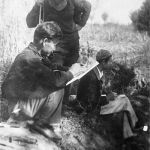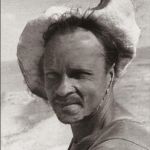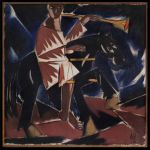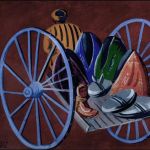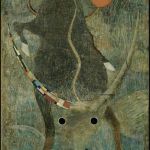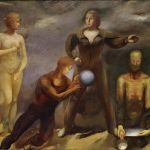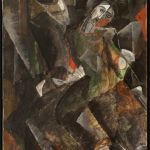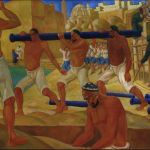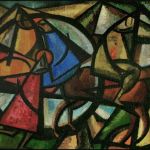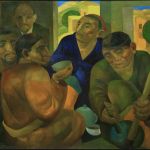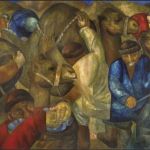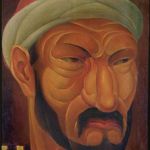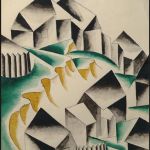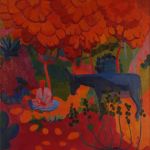- Socialist realist artists at work, by Max Penson (no names given of people in photo)
- Group photo of the artists represented in the Savitsky Collection Tashkent, Uzbekistan 1930s (Alexander Volkov at top, Nikolay Karakhan to his right, bottom right Ural Tansykbaev)
- Artists Alexander Volkov and Ural Tansykbaev, 1920s
- Igor Savitsky, Founder of the Karakalpakstan State Museum of Art Photograph by Militza Zemskaya
- “Apocalypse” by Alexey Rybnikov, 1918
- “Arba” (Cart) by Mikhail Kurzin, 1920s
- “The Bull” by Vladimir Lysenko
- “The Old and the New” by Solomon Nikritin, 1935
- “On His Knees” by Lev Galperin
- “Road of Life and Death” by Alexander Nikolaev, 1924
- “Constructing a Road” by Nikolay Karakhan, 1932
- “Arba” (Cart) by Alexander Volkov, 1924
- “Green Teahouse” by Alexander Volkov
- “Caravan” by Alexander Volkov, 1926
- “Basmach Man” (Bandit) by Alexey Podkovyrov, 1920
- “Houses” by Lyubov Popova, 1914
- “Bearded Man” by Ural Tansykbaev
- “Crimson Autumn” by Ural Tansykbaev, 1931
Igor Savitsky single-handedly created the State Art Museum of the Republic of Karakalpakstan in Nukus, Uzbekistan. He began his collection with traditional clothing and textiles created by the Uzbek people in the region, and moved on to collect the works of indigenous artists as well as the underground art of the Uzbekistan school, which melded Asian influences with European expressionism. Ultimately he would make six 1,700-mile trips (each way) to and from Moscow to rescue the avant-garde work of Russian painters whose art was considered degenerate by the Soviet regime. The state preferred “Soviet realism” for propaganda.
In what is now known as the Karakalpak Museum of the Arts, the Savitsky Collection faces a race against time and the elements to survive.



